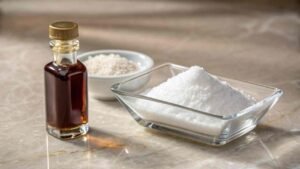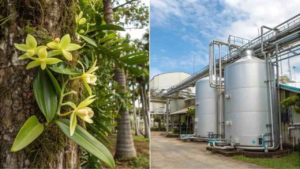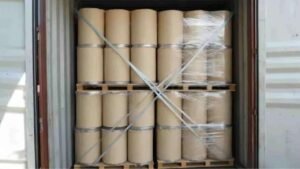
Why Is Market Forecasting Essential for Vanillin Buyers?
Tired of unpredictable va
Sucralose, a widely used artificial sweetener, is a crucial ingredient in many low-calorie and sugar-free products. Known for its high sweetness intensity and stability, sucralose plays a significant role in product formulation.

Sucralose is synthesized from sucrose through chlorination, where three hydroxyl groups are replaced with chlorine atoms. This process results in a compound that is approximately 600 times sweeter than sugar, with no caloric value. Its heat stability and non-reactive nature make it ideal for a wide range of food and beverage applications, including baking and cooking.
– FDA (U.S. Food and Drug Administration): Approved in 1998, sucralose is endorsed by the FDA for use in a broad spectrum of food and beverage products. The FDA’s safety assessment, based on over 110 studies, supports its use at levels up to 15 mg/kg body weight per day.
– EFSA (European Food Safety Authority): EFSA has established an acceptable daily intake (ADI) of 15 mg/kg body weight, ensuring that consumption remains within safe limits. The comprehensive evaluation by EFSA includes data from multiple safety studies.
– Health Canada and Other Authorities: Similar approvals and safety evaluations by Health Canada and other international regulatory bodies reinforce sucralose’s safety profile.
– Sucralose has been subjected to extensive toxicological testing, including long-term animal studies and human clinical trials. Findings consistently show that sucralose is non-carcinogenic and non-genotoxic. It is excreted unchanged in the urine, with negligible accumulation in the body.
– Sucralose is not metabolized by the body; approximately 85% is excreted unchanged via urine. This characteristic minimizes potential interactions with metabolic processes and supports its safety profile.
– Impact on Blood Glucose: Sucralose does not significantly affect blood glucose or insulin levels, making it suitable for diabetic and weight management applications. However, ongoing research is exploring its long-term effects on metabolic health.
– Insulin Sensitivity: Some studies have suggested potential impacts on insulin sensitivity, though evidence remains inconclusive. Continuous research is essential to clarify these effects.
– Microbiota Impact: Research indicates that sucralose may alter gut microbiota composition, though findings are preliminary and require further investigation. The clinical relevance of these changes is not yet fully established.
– Allergic reactions to sucralose are rare, and adverse effects are typically mild. Consumers may experience gastrointestinal discomfort, but severe reactions are not documented in clinical trials.
– Long-term safety studies have not identified significant risks associated with sucralose when used within recommended limits. Ongoing surveillance and research are critical to ensure continued safety.
– Aspartame: Unlike aspartame, which is metabolized into amino acids and methanol, sucralose remains unchanged, contributing to its stability and longer shelf life. This stability is advantageous for various food and beverage applications.
– Steviol Glycosides (Stevia): While stevia offers a natural alternative, sucralose’s higher sweetness potency and stability under heat provide specific advantages, especially in processed foods and high-temperature applications.
– The demand for sucralose is increasing due to rising consumer preferences for low-calorie and sugar-free products. This trend is driven by health-conscious consumers and the growing prevalence of diabetes and obesity.
– Sucralose pricing is influenced by factors such as raw material costs, production efficiency, and market demand. Procurement professionals should monitor market trends and supplier updates to manage costs effectively.
– Staying informed about regulatory changes and safety evaluations is crucial for procurement specialists. Changes in safety guidelines or approvals can impact product formulations and market availability.

Tired of unpredictable va

Is standard vanillin not

Are your customers asking

Are you tired of paying h
Sucralose remains a widely accepted and safe sweetener, supported by extensive regulatory approvals and scientific research. Its safety profile, combined with its functional advantages, makes it a valuable ingredient in the food and beverage industry.
WhatsApp us
We will contact you within 1 working days